|
The weekend kicked off with a visit to Santa at Kilmeaden Railway with the girls! We'd pre-planned this festive trip, staying at my parents' place for a family-filled weekend. The grand plan involved catching up, meeting the jolly man in red on Saturday, and then racing the Munster champs on Sunday. Now, when family, kids, and the whole shebang enter the equation, race prep gracefully steps down the priority ladder. Instead of course practice on Sunday late morning, a stress-free coffee and a tasty sandwich from Cas & Co. with Aisling was on the cards. My sister Clodagh took charge of the two little ones. Thanks, Clodagh! Basking in the sun, we gathered our thoughts after a whirlwind 24 hours of parenting. In retrospect, I would not have swapped it for cyclocross practice. This neatly aligned with my recent shift towards non-attachment to race results. The mantra became about savouring the sport, the race, giving it my all, and embracing whatever outcomes ensued. I even preached this gospel to my coach clients in their health-kick Monday message the week prior! Family first. Around 1 pm, I arrived at the track, got changed almost as fast at batman, and engaged in some banter with the cross community. Lo and behold, the effervescent Mr. Luis Mota appeared. After a quick catch-up, we embarked on a warm-up around the track. When Luis is your warm up companion, its more talk than pedal! I noticed a subtle tilt upwards of the nose of my saddle. Off to the car I went, armed with Alan keys. Loosened the bolt, levelled the saddle, and tightened as if I was at the studio doing a bike fit. As customary in races, there's plenty of pre-race conversations , but one person I always seek out for course wisdom is Trevor Woods. Then, a lap around the track to scope out the tricky sections. Come 2:15 pm, it was start-line time, and to add to the excitement, my sister Clodagh and my Dad, showed up. Now, Munster champs are raced in your age category, so that’s me in the M40s with 8 other contenders. No repeat of last week's nail-biter with Patrick Clifford. He was MIA! However, Sebastian Helke, the triathlon wizard turned cross master, was present—the same guy who edged me out on the beaches of Youghal. And there was Marcus Flavin, the course designer, the clear odds-on favourite. What a season he's had! Lining up, I squeezed in a Maurten gel leftover from the Youghal IM in 2022. The whistle blew, and off we went. My strong suit, the standing start, had me chasing Marcus Flavin to the first corner—a muddy left-hander leading from the motor race track to the cyclocross one. In no time, Sebastian Helke breezed past me, showcasing his dominance. My mission at that exact moment was to build a gap between me and Alan Lyons in 4th, a sound lad and fellow Dungarvanite. We'd bonded over the past few weeks, the friendship sprouting from a good chat at the Dublin UCI World Cup race. But my mind was on Alan's pre-race strategy. He told me he intended on keeping his "powder dry," not going full gas in the initial laps to better survive the demanding track—especially the bumpy first half, a mix of mud and grass, the type that clings to everything. Knowing this, my plan was to create an even larger gap to defend against his late surge. We reached the boards (see the photo of the tongue out! A childhood habit that I have yet to shake!), and disaster struck. On remounting the bike, the saddle completely flipped once I landed on it. I couldn't believe it; the nose of the saddle was now pointing towards the Deise sky! I proceeded to use my hand as a hammer and whack the front of the saddle with some unmerciful slaps to eventually get it back to something rideable. By this stage, Alan had zipped by me and got at least 30 secs out ahead. My brain suddenly reminded me, in the moment, how this happened. When I was levelling the saddle before the race, I tightened the bolts to a level sufficient for road cycling but not for this type of crazy craic! To add insult to saddle injury, Alan was pushing hard, not living up to his pre-race tactics anymore. I was not closing the gap at all. The race settled down, and this was the way it would stay for a few laps. I will admit to something. My inner voice was starting to say things like "you're not gonna catch him, and don’t bother changing bike (I noticed some mud clinging to the drivetrain) because it’ll mean that you’ll have to clean two bikes instead of one after the race!. But another voice would pipe up and say “keep pushing, anything can happen”. Then an actual voice, one belonging to Jason Travers shouted “the race is wide open, Marcus Flavin is out”. That type of message certainly helped to quieten my negative chatter and on we pushed. Then the next issue arises, on hitting the lever to gear down into the bigger gears, the derailleur was point blank refusing to move! I was stuck in an easy gear and had no choice but to spin the legs faster and get to the pits. Alan was increasing his lead, I think. I cycled into the pits and pulled my other bike off the rails (no pit crew for me this race) and got out of there as fast as I could. I heard a whistle going off a few times from the commissar in the pits and was sure it was something I did!! The fresh bike felt good and right then it was worth every cent I paid to Luis Mota for it! Actually, it was Luis's partner Marcia who took the photo below! Love it!! On passing my Dad and sister, I was messing but shouted to them, “Wash my bike”. I found out after the race that my sister Clodagh asked Jason Travers if she could wash my bike in the pits and Jason rightly replied that she would need to be registered to act as pit crew for me. My Dad however clearly didn’t listen to that conversation and marched over to the pits to see if he could help. He’s brand new to cyclocross and has no idea of the pit etiquette! I can only imagine what he was like! I remember passing the pit lane and seeing my dad in there, but also catching a sparkling clean Specialized Crux against the far fence. That must be my bike, although Kieran from Dungarvan, who was in the same race, has the same one and the same colour. I was banking that this one was my one! I’m guessing we were at about 2 laps to go at this point when I flew into the pits with the luxury of the Sliabh Luacra crew holding the Crux ready for mounting. I still wasn’t sure if it was my bike though, shouting “Is that mine” on the way into the pits! Thanks so so much lads. It felt zippy and fast. It felt good. I noticed the gap between me and Alan was without doubt getting smaller. I also noticed Marcus Flavin rippin’ around on his bike, the same Marcus Flavin who was supposed to be out of the race! Fake news! I started to push hard in places and then questioned whether I should have pushed that hard in other places. But the gap was continuing to shrink. Belief levels were rising steadily and eventually I caught up with Alan before the boards on the last lap. On remounting, I was praying my saddle would stay where it was, it did. I rode the sweet 2nd half of the track well with no mistakes and sprinted home to take third place in the eventful Munster champs M40 race. I normally never celebrate over the line, but this time I let the ego out and took both hands off the bars followed by an overly zealous teenage-style skid in front of the entertainer himself, Richie Cleverly! After a few chats with my Dad and sister, I headed over to Alan to find out that he too was unable to gear down into the faster gears for the last two laps, explaining how I bridged the gap when earlier I couldn’t. It clearly wasn’t a fitness issue! Alan didn’t have a second bike in the pits and also mentioned how the issue was more of a derailleur one rather than it being down to the tangling grass and the sticky mud. How annoying. Or maybe he is not attached to the result of his efforts and completely accepted the outcome at the time, I’ll have to ask him when I see him next.
That’s it now until the Nationals in January, which fall on my wife’s birthday! Last year, there was too much guilt. It was a non-runner. This year, Aisling knows how much I love Cyclocross. We got a green light. Big thanks has to go to the ever present and eagle eyed Sean Rowe, responsible for some excellent photos throughout the season. Another thanks to Jason Travers and his popular Munster Cross chat podcast for flying the cyclocross flag for Munster. Thanks also for reading and maybe, just maybe considering entering a CX race in 2024.
0 Comments
On the first day of Christmas my cargo bike gave to me….. Here goes my 12 reasons why it’s an incredible investment to buy a cargo bike, provided you’re in a situation that will suit one. (Kids, proximity to Creche/schools, form of transport etc). This was originally delivered as 12 separate posts over 12 days leading up to Christmas 2021. Here they are in one lumpy chunk!! Enjoy. I’m going to start with FUN. They are just a barrel of laughs! For both child and parent. I get such a kick out of decorating the cargo bike during the year. Even when it doesn’t look like a Christmas tree on wheels, the bike still turns heads and brings a smile to many onlookers. As you know, smiles are more contagious than Covid and they come with a barrage of FUN symptoms like saluting everyone you see, laughing to yourself whilst cruising around and pretending the smiles are your fuel to keep pedalling. Roisín (my daughter) likes that one! The bike is simply a vehicle of Fun and the cargo bike multiplies this ten fold. On the second day of Christmas my cargo bike gave to me…. A phenomenal mood and mental health boost This is a huge reason and one that drives us out in the wind and rain. Our main use for the cargo bike is bringing Roisín (and soon Zoey) to and collecting from preschool. It has been backed by strong science that one of the best things you can do for your mental health and mood is to get morning light into your eyes and unfortunately this boosting effect does not happen when looking through a windscreen. 80% of the cells in our body are connected to the circadian rhythm and so they rely on natural light in the morning and again in the late afternoon to help keep them operating as nature intended. You also get a nice dollop of endorphins when pushing the pedals, even if the motor kicks in to help me up the hills! On the third day of Christmas my cargo bike gave to me….. Excitement and imagination. I’ve just come back down to the sitting room after reading my 3 year old Roisín her bedtime stories. I mentioned to Rósh after her story that we will be sailing the pirate ship (cargo bike) to pre-school tomorrow but that we have an elf on board and the elf wants us to change from a pirate ship to a reindeer sleigh. Rósh loved it and is totally up for the conversion! The excitement is shared equally between us but the imagination is mostly with Roisín. I do try! We have fashioned up so many imaginative stories since adopting the bike in May 2019. Our talented cargo bike has played the role of a rollercoaster, a smile machine, a front row seat for a shadow puppet show and an entertaining ghost ride for Roisín’s friends at Halloween. On the fourth day of Christmas my cargo bike gave to me…. Optic flow and fresh air You may not have heard of optic flow before but everyone on Mother Earth has heard of the preciousness of fresh air. Together, they are a mighty combo. Optic flow is defined as the motion of all surface elements from the visual world. It is how your eyes pick up these elements is where the flow comes into it. The elements come in all shapes and sizes from potholes to people, butterflies and sign posts, to car doors and tree tops. When cycling/walking in the outdoors, our eyes are flowing from side to side all of the time picking up these elements. Optic flow has been shown to be a mood enhancer and is actually used in the treatment of anxiety states such as in post traumatic stress disorders. Mixing it with fresh air and especially fresh air when exercising is a win win situation for many reasons. One of which is that you will be taking deeper breaths when cycling and this will bring in more oxygen into the cells of the body and brain. Serotonin, the happy hormone, is strongly related to the amount of oxygen in your blood, making sense of why you feel good after being outside. On the fifth day of Christmas my cargo bike gave to me…. Money in the back pocket. It is as clear as clingfilm that running a cargo bike costs significantly less than a car. It even costs less to run this bike per week than the price of a packet of clingfilm from Supervalue and way better for the environment. No plastic or petroleum necessary. We own a car and a cargo bike instead of two cars. The average cost of running a car in 2019 was €10,691.12 according to the AA. The average cost of cycling our Bakfiets Milano Cargo bike is €190!! I’m guessing for the 11.6Ah Lithium Ion battery, it can’t be more than €2 to fully charge it on our off-peak electricity rate. With the daily trips to the creche and occasional spins into Cork city, the battery needs to be charged once per week. We have it serviced once per year for €90 and since buying it 2nd hand for €1400 in May 2019, we haven’t needed to repair or replace any parts except for the battery. The battery was sent to a company in Holland for overhaul/regeneration at a cost of €280. That’s it sorted for another 5+ years. I needed to buy a tube (€5.50) for the front tyre a few months back after our one and only puncture. It was a lucky one if you can call it that, happened just outside our estate and also acted as a lesson for Roisín in the importance of trapped air for transport!! On the sixth day of Christmas my cargo bike gave to me… Reliability = less stress Our main use of the cargo bike as mentioned earlier is bringing our daughter Roisín to pre-school which is 2.5km from the house. But this particular route, especially a certain Mathew hill and Forge hill are infamous for their level of traffic. Some mornings there can be a line of red lights as far up the hill that it can come right up to the estate! That’s feckin’ bad like. Other mornings it can be pretty tame. In an attempt to figure it out, it’s strongly linked to school traffic more so than work traffic. But not always! Anyways, it’s bleedin’ traffic and it can stress us, even the calm Dali Lama personalities amongst us, at times! The beauty of the bike is the freedom to cut through this queue like melted butter flowing down the hill. If anyone is concerned for our safety here, I can understand why, but it’s worth noting that traffic coming up the hill is moving slowly due to the line of cars going in the opposite direction. We are also lighting up like a Christmas tree at all times during the year! To get to my point, I can leave with Roisín at 8:15am and know that we will arrive at her pre-school before 8:30, every time. That’s nice to know when mornings can get a bit hectic, especially now with another baby in the mixing pot! Same story on the way home from pre-school with peak traffic times coinciding with collection. Cargo = reliability = less stress. On the seventh day of Christmas my cargo bike gave to us….. Connection I believe that Roisín, myself and Ash have a pretty strong connection going on, and the cargo bike adds to it. Take this morning as an example, we covered the following topics of conversation: Christmas party at pre-school excitement, will the elf on the shelf be able to get out of the castle made from magna-tiles tonight and fix your helmet, it’s falling off your head. You see, Roisín is right there in front of me. I fixed her helmet! The closeness certainly connects us when we are on the move. Over the years, I’ve been able to hold her head up when she dozes off to sleep, pop a phone with a video call to her Mom in front of her (or her actual Mom in front of her!!) and my cold fingers down the back of her neck for the laugh!! That’s probably a disconnector to be fair! On the eight day of Christmas my cargo bike gave to me…. Sustainable/green transport Our cargo bike runs on both human and electrical power, with the ratio between the two highly dependent on the cyclist’s mood and energy levels! It works like this, the motor will kick in once you pedal. You can pedal softly and the motor will back you up more or you can pedal with vigour and the motor will back off a little more. You also have three motor power options to work with. Funny that I previously just used the low power option for the first year and a half but now find myself using the middle power most of the time!! I’ll only use the high power motor if I’m hungover or severely lacking in sleep!! Not to lose touch with the topic here, even if we’re cruising to creche on the most support available from the electric motor, we’re still green. We’ll be a darker green in 8-9months when we lob Zoey and Roisín into the cargo bike and carry both their asses to the same creche before Roisín heads off to big school when we’ll have to make two drop offs on the one trip! To make it clear here, it’s not just me that steers our dear bike, Aisling is co-captain of the pirate ship too!! On the ninth day of Christmas my cargo bike gave to me…… Physical activity and Improved Immunity This is never so topical at the moment what with Omicron and other winter bugs knocking on the door. Physical activity is priceless for your health for so many reasons. Immunity is one such reason. We know that staying active improves our immunity but we still don’t know exactly how. The theories below have yet to be proved but are strong contenders.
On the tenth day of Christmas my cargo bike gave to me…. Freedom of the city The thing about a cargo bike is that it is big enough to be a tiny car but without the hassle and the legal responsibilities of a tiny car! The thing is bloody marvellous in that it can sweep us away into town with minimal effort (see yesterday’s blog), takes about a max of 15mins and when we get there, we can pull it up outside any bar, cafe, shop, post office, cinema or playground without having to squabble around for a parking ticket or have to think twice about having a pint in the said bar listed above!! Ultimate freedom. Plus there is plenty of room for bits and bobs in the bowels of the bike, including Roisín!! I’ve had the shopping in there, my two nieces, my wife and Roisín’s own bike. All at separate times, mind you! Cork city is becoming more and more bike friendly with new bike paths springing up all the time. Big thanks to Cork Cycling Campaign for their constant work in shaping the council’s decisions around bike infrastructure in Cork city. Cycling in Cork city is so much more pleasurable and safe than it ever was and will improve even more so with time. So on your bike. On the eleventh day of Christmas my cargo bike gave to Roisín A role model for having fun whilst exercising. They say the best way to steer your kids down a healthy path filled with exercise and good food is to take that same path yourself. We started cycling with Roisín in the cargo bike when she was 8 months old and now she’s 3 months over 3 years old. She has learned a lot about self-propelled movement into the great outdoors in that time through osmosis more than anything. It’s only recently (literally the last few mornings) that she is asking me to take her to pre-school in the cargo bike rather than the car. That’s interesting to me in that she is no longer passive in the car Vs bike decision and so she is now driving me on to stay active on our commute to her creche. So myself and Ash maybe acting as a healthy active role model for her, but in return Roisín is keeping us healthy and active!! Lastly, thought I’d give you lot a little whistle stop tour of the bike with its Xmas costume on and Roisín in there. Taken earlier today when we arrived back home. On the twelfth day of Christmas my cargo bike gave to us….. Community
By rolling around in a cargo bike, you also place yourself and your cargo into the strong community of cyclists here in Cork. Not only that, we have found that you become part of a wider community. Cycling a cargo bike turns heads! Smiley heads, inquisitive heads, generally all round positive vibes from said heads. These people make a connection with the bike in that flash as you pass them by, it might be a tiny connection, but it’s a connection all the same. We find having this beast of a bike that sticks out like a sore thumb becomes a talking point that encourages people to approach us and sparks conversation. Kinda like a little cute puppy !! Jaysus, now a puppy in the cargo bike would be some serious magnetic combo! If any puppy owners are interested in this social experiment, please get in touch. It’s been a blast writing these posts and I hope they have been both interesting and eye-opening to read. Please do your bit to let this blog go viral and spread like wildfire. Thanks to those who shared my daily posts over the 12 days of Christmas and helped to put these snippets in front of those who are on the fence whether to invest or not. Go on, go on, go on! Happy Christmas everyone from the Phelans. X Buying a new bike? Get measured so that you know you are buying the correct frame size for you. I’m approaching my 800th bike fit since starting the physio-led bike fitting service over 5 years ago. I’ve seen a lot! I’ve seen bikes that are simply too big or too small for their owners. In these instances, we’ve had to make drastic changes to the saddle position (saddle pushed fully forward or fully back) and/or stem length in order to try and make the bike work for the rider. This effectively takes the set-up of the bike away from how the manufacturer wants it to be, and at the same time impacting on how the bike was designed to handle and perform on the road. I’ve also witnessed the variation in sizes that each bike manufacturer stamps on their bikes when compared to bikes from other manufacturers. As in, a Medium frame for a Giant does not equal a Medium for Trek etc. And how some cyclists can have longer arms and shorter legs for their height compared to another of the same height with longer legs, shorter torso and arms. TOO MANY VARIABLES I’ve also tried and failed to help cyclists over the years in their quest to get the correct frame size when buying a new bike. I would ask them if their current bike felt good so that they could then take the stack and reach measurements from that and apply them to the new bike. Another approach was to carry out a physio bike fit on the client and their current bike and then make a judgement based on that bike fit. Both of which are not very accurate and contain a nice bit of guesswork. SOMETHING HAD TO GIVE It was the beginning of this year when I asked my trusted source of bike fitting info, GebioMized, what they do when put on the spot by clients to recommend the appropriate frame size when buying a new or second hand bike. For anyone who’s new to my physio bike fitting approach, GebioMized are the makers of my most treasured bike fitting tools, the saddle pressure and foot pressure mapping gadgets. They strongly recommended another German outfit called Radlabor who developed the SmartFit system to match cyclists with the correct frame size using a massive database of bikes and body measurements. The purpose of this blog is to explain to you how this system works and why it is worth its weight in gold or more appropriately, carbon! THE FUTURE OF BIKE SELECTION A nice way to explain how SmartFit works is to use an example of a recent client who wanted to know what bike, out of a choice of three different bikes, would suit him the best. Let’s call him Tommy! Tommy, a previous client of The BikeFit Physio, called into the clinic for the “bike sizing before buying service” and get measured using the SmartFit measuring rig. The below short video shows the rig in use with my colleague and fellow bike fitter Dylan acting as a model. The measurements needed from Tommy are:
The inside leg measurement is accurate in that it uses a hydraulic measuring tool to ensure that the reading is accurate and taken from the anatomical inside leg position. Here’s a sneak peak of this measurement with Dylan. The arm length is very important as it will highlight if the cyclist has the capacity for a longer reach or not. A situation where their arm length is shorter than the average arm length for their height would point towards a reduction in the ability to reach. Once we gathered all of Tommy’s measurements, we then plugged them into the SmartFit software and then brought up the three different bikes that Tommy was interested in. A) BMC Teammachine B) Trek Emonda SLR 9 C) Cannondale SuperEvo The SmartFit database of bikes and body measurements is able to instantaneously match the rider with the frame size and geometry that will suit him/her the best and in this case it was the Trek Emonda SLR 9. The huge, ever growing database of bikes includes the exact measurements of each bike on there with regards to top tube length, seat tube angle, head tube angle etc. They even reveal the stem length for each frame size within the same model range. The software will tell us what changes to make to a bike if going for a smaller or larger size in order to bring it closer to the ideal size for the rider. With all this information to hand, we can then select certain bikes and compare them with each other. Lastly, if you haven’t a notion what bike would be best for you, or didn’t have time to pick out a selection of your preferred options, not to worry. We can plug a wide selection of bikes into the software to find something that will suits your needs.
To read up more on the this service, click here to be taken to the dedicated page on the website or just go ahead and book your appointment below. Thanks for reading and sharing, John Phelan Chartered Physio and Nutritionist Part 5: Bike Fit, converting a road bike into a TT bike, sort of!I’m going to let the fingers roam free on the keyboard here without any preparation since this very topic is one that I have built a business around over the past 5 years. It is a delightful area where body meets bike and bike meets body. It cannot be viewed as a bike fit only. The ability of the rider to move through their low back and hamstrings has a huge influence on the set-up of the bike and one that we will look at later in the blog. It is the reason why physiotherapy and bike fit marry up so well and why there are physio bike fitters all over the place in Australia, a benchmark country for sports science. It is the reason why I called this leg of my business ‘The BikeFit Physio’. I could go on and on about the science of cycling, which fortunately for physio bike fitters around the world, is improving with more and more research papers being published in the area. To avoid an ultra-long blog post however, I’m going to focus on a type of bike fit that I have been faced with a lot since Ironman Ireland came to town and I’ll give my opinion and present the scientific findings as they come up. Here is the scenario: client comes in with their road bike and some tri bars attached to it and says “Can you give me a bike fit please and set me up with the tri bars too”. Hmmm, my reply is always the same, "Do you want this bike to be more of a road bike or a TT bike, because you can’t have the best of both!" They are simply two different beasts that can’t work as one. Generally speaking, a TT bike set-up involves a higher saddle position because it is significantly further forward (closer to the handlebars) and also an entirely different pelvic position and placement on the saddle. Most road bike saddles are not designed to allow the rider to sit comfortably in a TT position. I have seen road bikes with the nose of the saddle pointing down by more than 8 or 10degrees (that’s a lot) in order to allow the rider to get into the tri bar position without huge discomfort/numbness/pain to the saddle area of the body. This adjustment has a negative impact on saddle stability. We will talk about saddle stability later, but for now it is simply the ability to control the movement of your pelvis on the saddle. The other consequence of riding around with the saddle nose pointed down more than 4 degrees is the extra load placed on the quad muscles. That slight slope on the saddle is resulting in the quads having to work overtime to keep the rider from slipping forward. The quads are already working hard along with the glutes as the main pedal pushers, so extra work placed on this muscle group is not a wise move when it comes to cycling economy (energy used at known cycling intensity). I would like to extend this point to all cyclists no matter what bike you ride. If you are dropping the nose of the saddle in order to relieve numbness/pain/problems, you are missing a trick with regards to your bike fit. Perhaps the saddle is simply too high causing you to self-select the lower part of the saddle, which happens to be the nose of the saddle and also the area with much less surface area for weight bearing. This then causes numbness due to compression of the pudental nerve. It is also far less comfortable for obvious reasons. The quick fix, drop the nose of the saddle. The result, yes, it may reduce numbness but it will certainly reduce stability also. We can measure this through saddle pressure mapping technology developed by a clever bunch of German professional bike fitters and researchers who go under the name GebioMized. This is effectively a saddle shaped sock that fits over the saddle with hundreds of sensors that detect force going through the saddle when the rider is cycling his/her bike. The saddle pressure mapping will identify where the rider’s centre of pelvic pressure is on the saddle, and this centre of pressure is tracked as it moves during cycling. If the centre of pressure moves excessively (GebioMized have worked out these stability ranges through research), which would happen in the case of a high saddle position causing rocking of the pelvis, then we know the rider is not stable. Instability is linked with low back pain, saddle sores and a reduction in performance. It is also associated with neck and shoulder issues because the rider tries to gain stability through the handlebars to make up for the lack of stability on the saddle. The old straight arm tight grip scenario comes to mind. Not the only reason for straight arms I should add, another common reason is having too much force through the arms and not enough force through the saddle. In other words, poor weight distribution on the bike. A fantastic feature about the saddle mapping kit is that it tells me the force going through the saddle and if this is not at least 50% of the cyclist’s body weight, then we know there is excessive force going through the arms and hands. Numb hands anyone?? I realise that I am getting a little tech-y here, so I’m going to point you towards a video where I recorded the technology in use with a cyclist who was experiencing saddle numbness after 45mins of cycling. The video shows clearly the changes we made to his saddle map pressure distribution with lowering the saddle by 5mm and bringing it 8mm closer to the handlebars. Before I bring the focus back to the road bike being both road bike and TT bike rolled into one, I would like to clear up one cycling myth that does the rounds. You’ve all heard it being said, saddle soreness is part of cycling, toughen up and get on with it. Have a look at the response to another one of the survey questions, where I asked “Is saddle soreness just part of cycling??” It is simply not true. Granted it can be difficult to address all the possible factors at play that can lead to saddle issues
Right, back to the subject at hand here. If the cyclist does want their road bike to be converted into a TT bike then we go about the changes necessary for this transition. Best to describe this using an example of a previous client. Night and Day!! Huge differences between the two set-ups here. More upright torso angle allows for a more open hip angle at 12pm (top of pedal stroke) and therefore allows the cyclist to carry more power across the pedal stroke. That slight forward roll of the pelvis on the saddle improves the overall posture on the bike which will greatly reduce neck and low back discomfort. New TT saddle called the “Stride”, designed by GebioMized, allowing this set-up to happen by providing a surface at the nose and transition area of the saddle for the cyclist to weight bear through. A drastic change to his bike was required to allow him to take on a TT position. As it happens, the gentleman ended up buying a TT bike and reverting this one back to a road bike! In my professional opinion, in the case of a road bike with TT bars on it, it is best to prioritise the bike fit towards the road bike and then acknowledge that when moving into the TT position it will be a compromised TT position. In that the shoulders will not be sufficiently above the elbows to give that pillar-like support to the upper body, making the TT position less comfortable, less sustainable but at least optional! Here’s another nice example of a triathlete presenting with a road bike but was full sure she wanted the bike to be transformed into a TT bike for the season ahead. The season never actually happened due to the C-word that I said I wouldn’t mention back in the first blog of this series! To explain this case study, we would start with the initial position on the left side of both images above. Of all the angles used in bike fitting, the knee angle when the foot is at 6pm is the most researched. The research is saying to aim for an angle within a range of 138 to 145 degrees. The reason it is a range and not an exact angle is because of the ability of the cyclist to allow their hamstrings and low back to stretch and reach the larger knee angles within the range, while those with poor flexibility need to stay in the lower end of the range until their flexibility improves. If you look at the bike fit image on the left, you will see a knee angle of 145.5 but also an ankle angle of 32.5 degrees. This is an important finding. The ankle is reaching here to get to the 6pm section of the pedal stroke. What is more important to note here is that the research shows when cycling for longer periods of time the heel will inevitably drop due to fatigue in the calf muscles and the heel can drop also when applying more power through the pedal. Both of these instances will cause the knee angle to increase and subsequently end up outside the recommended knee angle range. The triathlete in this case did have good ability to stretch through her hamstrings and low back but was clearly not stable on the saddle in this pre bike fit set-up. Looking at her saddle map, which is far more sensitive compared to looking at joint angles, we can see a red line that is angled significantly away from horizontal telling us that her pelvis is rotating excessively and also her centre of pressure moved too much in the north to south direction, indicated by the black squiggly line! This effectively means that her pelvis tilted forward and tilted back excessively when cycling in this position due to the over-reaching lower limb. The saddle was a road saddle which meant that she could not weight bear through the nose of the saddle and therefore needed to take up a position on the middle of it, causing more lower back flexion as seen in the image above. The same client was experiencing low back pain on the bike when cycling in the tri bars and this was something we set out to resolve with the physio bike fit. We fitted her bike with the same GebioMized TT Stride saddle and reduced the saddle height by 7mm to allow the knee angle to fall within the acceptable range and the same goes for the ankle angle. You can see a very different saddle pressure map in that the centre of pressure is now positioned where it should be when cycling in this aero position, that is on the nose but more than 40mm back from the very tip of the saddle nose. You can also see a more stable centre of pressure with a lot less movement. It is hugely important to have stability on the saddle when cycling in the aero position because the more the cyclist needs to shift and reposition their pelvis on the saddle, the more they are taken out of their aero position. This is why saddle stability is now an indicator of aerodynamic ability. By allowing this client to sit further up the saddle we could allow her shoulder to position itself within 90-100 degrees over the elbow, an important factor to support the upper back and shoulders. Here's what she had to say afterwards: “Great service from John, he knows his stuff. Bike a lot more comfortable on long spins and on the turbo…..got a TT saddle from John which allows me to get closer to the TT bars. John also gave me some useful bike related exercises to do. All round great experience!” Lastly, I would like to add that there should be a plan to work with two positions on a TT bike during a bike fitting. An active shrugged position and an inactive more relaxed position. The active shrugged position is used for periods of training and racing when the rider wants to increase speed and reduce wind drag This is now a widely used tactical move by triathletes around the globe. The more habitual/relaxed position is adopted for the majority of the time spent on the bike during training and racing. I have added images of a triathlete in both of these positions below. The bike measurements are exactly the same for both of these positions, all that is different is the shrugged position. The shrugged position is obtained by allowing your upper spine to fall between the shoulder blades and also rotating the pelvis that little bit more anteriorly (tilting the pelvis/hips forward). Please note, not all cyclists can get into this position, it requires a good level of mobility throughout the spine and lower limbs. The upper traps also need to be conditioned in order to sustain this shrugged position. We will cover this in the next and final part of this blog series on resistance training for triathlon. I will leave it there for now. Please, please don’t hesitate to get in touch if after reading through this you have a question that you would like to ask. I am very happy to hear from you and to hear you are reading the blogs! John Phelan MSc Physio, BSc Nutrition www.thebikefitphysio.com info@thebikefitphysio.com Part 4 : Weight loss when trainingSo, let’s start this blog by taking a trip back to the survey that went out to over 90 triathletes who have signed up for the Cork Ironman festival this year. I asked “Is weight loss part of your Ironman training in 2021”? Out of the 91 respondents, 43% said yes and 57% said no. I then asked this exact question: Did you know that the PNOE gas analysis unit can determine your resting metabolic rate? This is a key number of calories required to maintain weight and so will inform how to achieve healthy weight loss. The RMR test will also tell what your preferred fuel source is at rest, and the goal for weight loss and endurance athletes is to move the preferred fuel source towards fat in a ratio of 70:30; fat : carb. The answer was a resounding No! 87% of the respondents did not know this service existed and may not have known about the objective of shifting the predominant fuel source at rest towards fat in order to successfully achieve and maintain weight loss and perform well in endurance events. We have already discussed the benefits of low-end metabolic efficiency (burning fats effectively at low to moderate exercise intensity) in the 2nd blog, so I’ll leave a link to that here. The purpose of this blog is to identify the pitfalls that can occur when attempting to lose weight whilst training, or just attempting to lose weight in general. Basal or resting metabolic rate. This is simply the amount of calories you burn when at rest, or doing nothing. The major organs in the body such as the brain, heart, liver and kidneys use up about half of the resting energy while fat, your digestive system and your muscles account for the rest. For this reason, it can fluctuate, not only due to increasing and decreasing muscle, it can even be influenced by e.g., hormones during the menstrual cycle. Age is another factor that will reduce our resting metabolic rate, even if we do our best to maintain lean muscle mass. Genetics play a role too, the research however is still not clear on this. One thing that is clear is that your basal metabolic rate accounts for 60-80% of total energy expenditure for the day. This is an important statement for those of us who are training and maybe believe that physical exercise is the biggest energy cost in their day. This could of course be true if said person ran a marathon or cycled a stage of the tour. However, when the bout of exercise is within your standard training volume, then be aware that you don’t then over-consume calories. And please don’t rely on watches that tell us we have burned 3000 calories after an easy cycle!! A key factor here is how can we increase our basal metabolic rate in order to better manage our body weight.
Crash diets will significantly slow our metabolism/reduce our resting metabolic rate because the weight loss happens too quickly. Naturally the body’s resting metabolic rate will reduce when we achieve weight loss because of the probable loss in muscle but also because the organs and muscles do not need to work as hard to move a lighter body. With slow gradual weight loss the metabolic rate drops slightly but doesn’t plummet. How do we find out our resting metabolic rate? There are a number of equations and formulas out there that use your height, weight and age to calculate your RMR. However, there is large room for error here as they do not account for muscle metabolism and oxygen consumption simply because they are not measured. Gas analysis is the way to measure these metrics and this technology has advanced in recent years. The PNOE portable gas analysis device is the system I am using at the clinic and I am finding it a revelation for my nutrition service and also for helping people train appropriately for their goals. It allows me to see what is going on at a physiological level with the person in front of me. Using the data from their resting metabolic rate test and their active fitness test, we can figure out why they are not making progress and hitting targets. Since we covered the gas analysis fitness test in the 2nd blog, I want to tell you more about the RMR test and also take you through a breakdown of my own report using a video blog. Before we do that, can I just bring your attention to the chart below and to a client case study. This chart is a nice way of working out your calorie requirements once you know your resting metabolic rate. Refer back to this chart after watching the video blog to get a full understanding around this very topic. Have a look at this screen shot below from a previous client’s resting metabolic rate report. It shows the fuel usage ratio at rest. This client was tested back at the end of December when he decided he wanted to train and eat appropriately for the following 9 months in preparation for the full Ironman triathlon in August. Let’s call him Mr. IM. He was quick to tell me that his training was mostly made up of trying to run 5k as fast as he could. He also wanted to lose weight during his structured training plan. We tested his RMR and then he was onto the bike for a VO2Max ramp test protocol to look at how his physiology behaves at low, moderate and high-end intensities. The RMR test showed a large shift towards carbs as a fuel source (83% carb : 17% fat) when at rest and the same trend happened during his fitness test when we looked at the data afterwards. And to complete the picture, here is the discussion of the data following Mr. IM’s gas analysis fitness test. This screen recording is very interesting in that it completes the physiological story belonging to Mr. IM which ties in with his RMR report. In it we discuss:
Here is the aforementioned video blog on my own RMR report evaluation. In it we discuss:
Falling prey to the post low-moderate exercise binge. This is a really interesting area and I’m sure has significant psychological connotations wrapped up with the physiological ones! Ok, so we do a hard session on the bike for instance, it was 2.5 hours in length and contained a lot of hills where the group pushed hard and the overall effort levels were in the 6-7/10 range on the scale of perceived exertion. (See blog number three for more info around this, training load management and running gait analysis). This type of training session will need a proper recovery as far as nutrition is concerned. This means consuming a meal with carbs and proteins to replace muscle glycogen and build muscle, respectively. We know now after reading the 2nd blog that carbohydrate is required when training at this intensity, so it should be no surprise that a ratio of 3:1 carb:protein is recommended after such an intense session. You should aim to get at least 35g of protein in this meal. An attack on the kitchen shelf is ok here, and a binge is called for, provided it contains the proteins. Now, if we change it up a little and give the example of the 45year old experienced cyclist who wants to lose weight and has just completed a Sunday cycle with her two friends, which was 2 hours in length but conversation was always possible and there was a lot of it! Hills were scarce and the few hills that did feature were taken very conservatively and gently. This cyclist needs to be very careful when she comes in the door and walks towards the kitchen. She is in a very different physiological state compared to the example above. She may feel she has earned the right to eat everything in sight and psychologically this may make sense, but it doesn’t make physiological sense! This is because her body will not be craving recovery nutrition and so her usual daily diet will suffice. Her usual daily diet should provide sufficient calories to look after her RMR and her activities of daily living, while the calories burned during the two-hour cycle will support her weight loss goals. Eating during exercise, or not. The same applies for the male/female cyclist out for an easy spin. Pack appropriately here. Putting a gel in your back pocket is fine, but it should only be used in an emergency. It would be more appropriate to bring a complex carbohydrate here like an apple or even a peanut butter rice cake. When cycling at an easy intensity, the body should be using a mix of carbs and fats, but significantly more fats will be utilised over carbs if the cyclist is metabolically efficient at low intensity. In this instance, the cyclist will not require much, if any fuel for a 60-90min cycle. If on the other hand the cyclist is not metabolically efficient and is burning more carbs than fats, they should try to not feed this poor ratio by eating simple sugars on such a low intensity ride. This can happen very easily with a stop at a café for a scone or snacking on a Nutrigrain or Nature Valley bar. This is not helping their weight loss if that happens to be a goal and certainly not helping to improve their muscle metabolic efficiency (fat burning efficiency). For this category of cyclist/triathlete/runner/person, a good idea would be to do the same easy spin/jog but in a fasted state. First thing in the morning after a black coffee is a nice way to do this. The key factor here is that the exercise session needs to be low intensity and can be perhaps 45-60mins to start with before gradually extending the time. Very slight increases to the intensity can be added but would need to be done so slowly over an extended period of time so that you remain in a fat burning state. By training in a fasted state, you are encouraging your body to use fat stores to provide the energy for the session. But remember, the main indicator for fuel usage by the body is exercise intensity. It is vital that you stay in zone 2 for these sessions in order for them to be effective. And it is equally important that you know what zone 2 is for you, which brings us back to blog 2 and the importance of gas analysis testing. On the topic of fasting, there is very clear evidence coming through on how beneficial it is for everybody to allow their body to be in a fasted state for at least 12hours. The friendliest way of doing this is to stop eating at 7:30pm (brush your teeth to put a cap on your consumption) and then break your fast with breakfast at 7:30am. Clearly a very difficult challenge for someone working night shifts. On that matter, science does show that people working late shifts for long periods of time have higher rates of cardiovascular disease, obesity and cancer. There have been well documented studies in mice where one group of mice are allowed to eat ad lib while the other group are given the same number of calories but only allowed to eat them within a certain time window (8-12hours). Time was restricted here while the calories were not restricted, as both mice groups were given a high fat and sugar diet in the study. The mice that ate during the 8-12 hour window did not become obese, had normal liver function, normal cholesterol and showed better muscle mass and lower fat mass. The other group gained weight (30% increase in body weight) and showed higher cholesterol, fat and sub optimal liver function. When they tested the same model with healthier food, similar findings were reported. The time constrained eating group were certainly healthier compared to the time constrained group on the high fat and sugar diet, but they both shared a commonality in that they maintained their body weight and did not increase in fat mass. This whole area is called circadian nutrition, or simply eating during our active hours only. Interestingly, improved endurance ability was found in the mice that had an 8-9 hour eating window (that is a 15-16 hour fast in 24hour period) but not with the mice that had a 10-12 hour eating window, although both of these groups maintained body weight and shared in the healthy spoils of time restrained eating. To reiterate, both of these groups did not gain weight compared to the weight gain seen in the mice who were allowed to eat whenever they wanted. They found increased mitochondrial volume in the liver but also in the brown fat tissue with the 8-9 hour restricted eating group. You should know after reading the 2nd blog about the importance of mitochondria in endurance training. Ketone bodies are being produced after 8-10hours of fasting and the link between using ketone bodies as fuel source and their benefit to endurance activity is becoming stronger and stronger. It is not within the boundaries of this blog to go down that road at this point in time. Fasting physiology is however still a new science and so more research is needed. One very recent and fascinating finding around why insulin sensitivity is very different between day and night is around the role that melatonin has with the beta cells of the pancreas, where insulin is made! Melatonin is made in the brain and in the gut and it can actually inhibit insulin secretion. Wait for this, for all you romantics out there, having an evening meal with just a candle lighting between you two may not be a good idea! You have less light which means more melatonin. That is why calories consumed late at night can have a different effect on the body compared to the same calories consumed earlier in the day. On a similar note, in a weight loss trial in Spain, one group achieved significant weight loss while the other group had only moderate weight loss. The only difference was that the group who lost more body weight had their lunch earlier in the day compared to the usual later time of 3 or 4pm in Spain. What is important to add in here is that your eating window starts as soon as you take the first sip of that precious black coffee. The superbly named Satchidananda Panda is the leading researcher in time restricted feeding. He is a professor at the Salk Institute in California and author of The Circadian Code. To refer back to the survey before we call it a day. The question was asked if an RMR test using the PNOE metabolic gas analysis device combined with a nutritional consultation to facilitate weight loss would be of interest? The response bodes well for this service in the near future. If you fall into one of the interested categories, you can read up more about the service here where I also mention the PNOE A1 Nutrition plan that syncs nicely with your RMR result in designing a food plan using the precise calorie requirements to achieve weight loss and maintain it with RMR retests to keep an eye on metabolism and your fuel source ratio. I'll finish up there, feeling a bit peckish! Many many thanks for tuning in to the blog series. I sincerely hope you are getting something from it and please let me know if you happen to have any questions, big or small. John Phelan MSc Physio, BSc Nutrition www.thebikefitphysio.com www.lifefitphysio.ie Part 3 : Injury Prevention; numero uno in endurance training If you’re not in, you can’t win. One Ironman survey participant put it bluntly with his/her piece of advice, “No. 1 rule, don’t get injured”. This blog is going to try to lay out the top tips to stay off the physio’s patient list! You might have noticed I didn’t use the old cliché to stay off the physio table. That’s because I happen to have a little bug bear around that. When it comes to overuse injuries (stress fracture, shin splints, achilles tendon, calf strain, frontal knee pain, runners knee, IT band, tendinopathies etc.) and you attend your physio, there needs to be an in-depth discussion about your training volume/speed/recovery leading up to the injury. This chat should happen before you throw yourself up on the table. The interview, if carried out properly, will steer the diagnosis hugely. At that point, the table can be used, but only to carry out a series of objective tests in order to confirm or disprove the diagnosis. Then, and only then, should a finger be pressed against the area looking for the “ow” from the patient. This logical work up of questions and tests will allow for a non-biased approach and better patient care. Let’s move on with the blog now that I’ve got that out of the way! I plan to stay regimented and straight to the point with this week’s post using bullet points to keep me right. If you make these part of your endurance training plan, you will have a significantly lower risk of overuse injury.
NB: It is so important to not interpret the zone 2 recommendations as a blanket recommendation that everyone should do. Zone 2 training is not useful for someone who already has impressive metabolic efficiency at low intensity training. They already have high capillary content and mitochondria density, so they are better working in the zones where they are not as efficient. Gas analysis fitness testing finds out where the client is inefficient, their physiological limitations and the intensities where they do not train. The advice is to start training where the client doesn’t usually train. This is called training variability and it is vital to any well-rounded training plan. The Running Shoe This one may cause a stir amongst my readers!! I'm gonna conserve my bullet points and go in all guns blazin' here! There is no scientific evidence to show that changing running shoes after a certain number of kilometres have any bearing on injury risk. We know the manufacturer of the shoe sets out a number of kilometres where they recommend changing the shoe like you would the tyre on a car. There is no research showing this to be the case. There is also no conclusive research showing the need for a stability shoe to help control over-pronation, or likewise the need for a neutral shoe for those who don’t have fallen arches or otherwise known as over-pronation. There is a study however with a large sample size where they followed runners for 1 year. The participants of the study were graded in terms of their foot position from one of supination (high arch) all the way to pronation (flat foot). The results were interesting in that injury rates were lowest in the group where the foot position was between 7-10 degrees pronation. This group had injury rates significantly less than all the other groups. This tells us that a flat foot can be seen as an advantage with respect to running injuries! To second that statement, there are no studies showing a relationship between over-pronation and increased risk of injuries. To stay with the science here, the reason why general wear of the cushion in the shoe after so many kilometres is not a reason to go to the shops or online to buy another pair is because there is no research connecting cushioning properties to injury risk. What may entice you to the shops is when you feel your shoe is no longer as comfortable after however many miles. That’s the right time to change them. Comfort is now the new paradigm in the world of running shoes instead of cushioning and pronation. Comfort is a vague term, it’s difficult to define and to quantify and it’s very subjective, I know. More research is needed, but for now, the comfort filter is backed by science. In summary, is that the research does not support the requirement for neutral shoes, stability shoes or hoka shoes in order to reduce injury risk. In practical terms, you should try on lots of shoes and go with the ones that feel the most comfortable. If they still feel comfortable after 6 years including the 2015 Dublin marathon under their belt, then that’s absolutely fine and will not put me at increased risk of injury! I say this because it’s true. Myself and Aisling ran the 2015 Dublin marathon together, and stayed together for the entire thing. We still run in the same runners! A show and tell video with the famous shoes and a little piece on barefoot runners. Allow adequate recovery. This is a huge topic to cover so I’ll keep it to the following points
Lastly but very importantly, keep tabs on your mood. Psychological symptoms will usually occur before physiological symptoms. If you sense a change, this should alarm you to check your training volume/intensity to see if you can detect any overtraining. This is a good place to point you towards a running performance and injury prevention short video series I made for the Run Killarney event back when the world had not yet met Covid. I don't know why I let my hair grow that much! I didn't have the excuse of level 5 restrictions either. The above Runfit service has progressed from the time when the videos were recorded. I now use Leomo technology to capture running metrics such as cadence, vertical oscillation, foot strike, recoil angular range, leg swing speed and more. The best thing about this technology is that it allows for a gait analysis assessment to take place outdoors. For more information on this service, click here Thanks again to all of you for following the blog series. John Phelan MSc Physio, BSc Nutrition www.thebikefitphysio.com & www.lifefitphysio.ie Part two: The importance of gas analysis testing in endurance training. Before I get stuck into this topic, I want you all to know that I do offer a fitness testing service, of the metabolic gas analysis kind, which straight away places me in a position of bias towards the exact title of this here blog! I want to put that out there first and foremost. However, I am 100% led by research findings and scientific evidence in my physiotherapy practice, and this blog is no different. I really feel we should revisit a point made in last week’s blog before we dive into physiological limitations, respiratory capacity v’s capability and metabolic efficiencies! That is the simple act of enjoying your training. I touched on exploring the question of “why” you are training and also looking at your training as an opportunity to better your mental and physical health alongside performing well in your target events. I listened to a friend’s podcast this morning (‘Flip the Script’ is really worth lending your ear to by the way) - Conor O’Keeffe talked about how easy it is for us to move out of the present tense when we are training on a bike or out for a run and start thinking about the future race that you have signed up to and whether you are on target in terms of your fitness and readiness for the race. He likened it to brewing a cup of coffee, “we’ve got to start enjoying the process of brewing in order to truly enjoy the sipping”. Same goes for Ironman or any event, long or short distance. The event is the coffee and the months of training, the brewing. In the first blog, one piece of advice from a previous IM finisher was to “not underestimate the journey”. I’m guessing this is precisely what he/she meant. So, let’s remember this, especially when we work with metrics such as tidal volumes, breathing frequencies and VO2Max. I don’t intend to get knee-deep in exercise physiology here, but rather keep it readable and practical, so here goes. Fitness test Vs Fitness assessment A ‘Fitness Test’ will give you a fitness score/report but the data will also identify how you ended up with this score, and what physiological limitations prevented you from scoring better. A ‘Fitness Assessment’, much like an FTP “test” on a bike or a bleep test, will give you a fitness score only. Both have their merits and there are appropriate reasons to use both. Fitness testing is important in endurance training programmes because it reveals the limitations that are hampering the athlete’s progress. Let’s discuss a typical VO2Max ramp test protocol using a gas analysis testing device. This test involves wearing a facemask that measures O2 intake and CO2 output, the client initially starts off on the bike/treadmill/rower at a very low intensity. The intensity is increased by a certain amount every minute until exhaustion. The information that can be gleaned from this type of test is fascinating and hugely important to know, especially for those who are not seeing improvements in their objectives and those who are lost in the sea of information and misinformation around training principles and metrics. This may be a good time to tag in the very recent podcast video recording on Zoom between the head exercise physiologist and physio of PNOE gas analysis, Daniel Crumback, and myself. We discuss the use of these metabolic gas analysis tests with my own clients and also discuss ‘before and after’ data from my own personal tests. My personal case study was discussed on the podcast because it really hits home the importance of testing for endurance training. I’ll talk about it here and if anyone wants to hear and see more, you can click on the link here. (If you want to bypass the intro and other bits and pieces, then skip to minute 17 to get to the juicy data discussion) My training patterns changed after the birth of our daughter in August ’18. With less time available, I swapped out the long bike rides and replaced them with short harder sessions. My most frequent run was a hard five or six kms into the hills around our house. I raced sprint triathlons and middle-distance adventure racing. This type of training continued into 2020 (without the races of course). So my physiology was set up for short, fast, intense exercise and this is exactly what you see in the data from a VO2Max ramp treadmill test performed on the 11th of September 2020. The main finding that I want to draw your attention to here are the two lines that cross over each other and then go their separate ways. The lighter blue coloured line is my carbohydrate usage as a fuel source during the test and the darker blue line along the bottom is fat usage. The Pink section of the test is the warm up and the speed was a very easy 5.1km/hr or 11:46minutes per km. You can already see carbohydrate usage begin to rise within the warm-up period of the test and with each ramp increment representing 1.3km/hr, you can see that by the time I reached 13.2km/hr or 4:33min per km, I was not using fat as a fuel source at all. This is what is called poor low-end metabolic efficiency. It is also something you do not want happening if you are working towards a long distance endurance event, such is the Ironman and 70.3. For these types of events, the goal is to be efficient at fat burning so that you can maintain moderate to high exercise intensity for longer periods. It’s not all about developing a fat burning engine, capillaries that carry oxygenated blood to the moving muscles will grow when the athlete trains in an accurate zone 2 heart rate range. It is safe to say that my capillary count was not impressive because I rarely trained in zone 2 in the couple of years before Roisín was born and not once after she joined us! Same can be said for mitochondrial density and function. Mitochondria also increase in content with zone 2 training. Mitochondria are the powerhouses of our cells where energy is made, so it goes without saying that the more mitochondria you have (density) and the better that mitochondria work (efficiency) the better you perform in endurance events. Research is showing that mitochondrial efficiency is mostly improved with high zone 5 interval work while their density is increased with high training volume in zone 2. It is a completely different story if your goal is to run 100meters, but that’s for another day’s discussion. These are my accurate zones that were identified from the treadmill test on the 9th Sept: Zone 2: Heart rate range : 102-112 Zone 3: HR range : 112-148 Zone 4: HR range : 148-160 Zone 5: HR range : 160-185 I then set my mind on carrying out the appropriate training in order to improve my low end metabolic efficiency. I picked a 9km run on flat terrain and for the purpose of the “injury prevention” blog that is coming next, I gradually introduced the volume of kilometers over a few weeks! In order for me to stay in zone 2, I was jogging at a average pace of 6:50min per km. These were morning runs (2-3 per week) of over 45mins and I preceded them with black coffee only and had breakfast afterwards. The details around nutrition will also be covered in a later blog. I was also including four to five intervals of zone 5 sprints for 30secs within the zone 2 session, as zone 5 intervals will also grow capillaries and improve mitochondrial function. This will improve both low end and high end metabolic efficiency, where high end means higher intensity exercise. I worked away on this plan which also included one or two turbo-training sessions on the bike per week with the same approach. I didn’t know my zones for the bike and please note, we can not use our running zones for cycling and vice versa because they can be significantly different due to how mechanically efficient you could be on a bike compared to running. So I used the rate of perceived exertion chart to try and stay in zone 2 as best I could for these sessions. The RPE scale is a nice tool to use if you do not have any interest in monitoring heart rate, power, or fitness testing. By the end of the 9th week, I recorded a run around the same 9km route but this time the average pace was 6min per km and staying predominantly in zone 2. Time for a re-test: 8 weeks is a good time to re-test especially for someone with potential to change their physiology as much as I did. If you would like to see a home-made/clinic-made movie of the retest, there it is below. Warning the quality is not cinema standard! I somehow managed to complete the test with Roisín running around the clinic causing havoc. I retested myself on the 15th of Jan 2021 using the same protocol and here are the new training zones pulled from the data Zone 2: 137-151 Zone 3: 151-158 Zone 4: 158-170 Zone 5: 170-189 And this is how the data looked on the graphs Very easy to see the change in fat burning ability here with the darker line (fat usage) staying with the light-coloured line (carb usage) for longer into the ramp test before the final crossover point occurs at a heart rate of 150 beats per minute. The training recommendation based on this significant positive change was to continue to work in zone 2 with zone 5 intervals for the rest of January and all of February. My new zone 2 range meant I could push the boat out some more. I recorded a recent run at a pace of 5:21min per km with average heart rate of 141 around the same 9km route. Happy days. The next paragraph gets a little deeper, perhaps deeper than knee deep, into certain respiratory metrics. For those of you who are interested, keep going. Hyperventilating (taking too many breaths per minute) at a low intensity running speed is quite commonly picked up with testing. This breathing pattern tends to result in lower-than-normal lung volumes (air intake). When monitoring these metrics in the data after the test, the tidal volumes or litres of air per breath do not increase appropriately as the running speed incrementally increases. This type of breathing pattern can lead to early fatigue of the diaphragm (our main breathing muscle), causing something called the metaboreflex to kick in which will slow the athlete down. The metaboreflex is a survival mechanism, it causes a redirection of oxygenated blood to the diaphragm and a reduction of blood supply to the working muscles, which limits performance. That is an example of a respiratory limitation to exercise performance and can only be detected using gas analysis testing. In this example, there is certain information we need to know in order to accurately diagnose the limitation. Is this a respiratory capacity, or a capability issue? To do this, the client’s lung capacity is measured using a spirometer before the fitness test. This is your standard spirometry assessment where you blow as hard as you can and as much as you can into the spirometer device. It measures your lung volume (how much air you can fit in your lungs) and your ability to push out air quickly. If these pre-fitness test measurements are within the predicted norms for your age, height, gender and ethnicity, but your actual fitness test values do not reach at least 75% of your predicted norm, then we can conclude that you have a lung capability issue. This essentially means that you have good lung volumes at your disposal but you are not using the volume sufficiently when exercising. On the contrary, if your spirometry scores are below their predicted normal, this is called a respiratory capacity issue and can be improved through specific respiratory training. An example of respiratory training would be to work on taking deeper breaths and improve your ability to push air out quickly from your lungs. Known diseases that affect lung capacity are taken into consideration. With better awareness of the type of respiratory limitation comes better tailored advice around training. I want to wrap up this week’s blog but before doing so, here are some interesting results from the same survey that was used in the first blog. Question 3: Are you aware of a portable gas analysis device called PNOE that can be used to calculate your VO2Max, resting metabolic rate, training zones, preferred fuel source and exercise limitations? 80% of the 91 respondents were not aware of such technology. Question 4: Would you be interested in getting a VO2Max test to identify your training zones and fitness limitations at an affordable cost? Example of limitation: At heart rate of 160-170, lung volumes significantly reduce showing a respiratory limitation at this training zone. You will be given specific advice to address these limitations following your test and a retest will be carried out in 8 weeks to reassess these limitations and set new training zones You can read more on the fitness testing service and take a look at a sample report that is emailed to you following your test along with a zoom call from myself to discuss the data and make training recommendations. Hit the button at the bottom, and if interested in this sort of stuff and want to be kept in the loop, sign up to the newsletter below. Many thanks for reading, for now we got to keep on keepin’ on. John Physiotherapist and Nutritionist www.thebikefitphysio.com & www.lifefitphysio.ie P.S. Conor’s blog is called “Flip the Script”. His take on life is refreshing in that he speaks from his own learnings while remaining incredibly humble. He has morphed into an ultra-distance runner over the last three years and has a few projects up his sleeve for when restrictions eventually lift. He’s the guy that ran around his patio for 24hours in aid of Pieta House! P.P.S Blood flow restriction and altitude training both share a commonality in that they cause reduced oxygen availability (hypoxia) which results in greater capillary and mitochondrial growth. This is because hypoxia is one of the key determinants for capillary growth. It is also worth noting here that both capillary supply and mitochondrial density are really important for pushing up your lactate threshold (point at which lactate does not accumulate) and critical power (tolerable duration of severe-intensity exercise) through delivering more oxygen and removing substrates that cause fatigue. That goes out to those of you who are into hard training sessions, only. I for one experienced first hand the benefit of capillary growth and its positive influence on lactate threshold performance when I took on the first race in the Kayathlon virtual racing series yesterday morning, a 5km run, as fast as you can!! Managed to complete the 5k in 18:50mins, bettering a previous PB set a few years back at the Ballincollig park run of 19:55. As mentioned earlier and in the podcast, I had not been doing any threshold (intense) training in the past 12 weeks and more. Bloody couldn’t get over how comfortable I felt on the run. The science works! Preparation for your mission starts now. The aim of this long-distance triathlete blog series is to raise awareness in this group of go-getters to what really matters, point out areas that are worth exploring and keep the enjoyment of the journey at the top of the list. I will be using results from a recent survey to help structure the first two blogs in the series, and then use my experience in physio, injury prevention, nutrition, bike fit and exercise physiology to steer the rest of the blog posts. It goes without saying, we have to believe with every muscle cell in our body that our IM Cork event will go ahead as planned on the weekend of the 14th August. That’s about the only reference to COVID-19 that I wish to make in the series, let’s see how far I get! The layout of the series will look like this:
Let’s get crackin’. The opening question of the survey had to be, have you ever walked the walk before? Or more appropriately, swam the swim, biked the bike and ran the run! Out of the 91 respondents, 38 of them were embarking on the Ironman or half ironman challenge for the first time. Bravo to you. I am number 39! This will be my first long distance triathlon and I am absolutely brimming with excitement about the task at hand. My previous endeavors lie in the adventure racing circles and mountain biking events with a few sprint triathlons in 2019. Can I add a little more here if I may, since my training and physiology will be analysed later in the blog series and knowing a bit about my sporting background will help with understanding the science. My training history over the past two and a half years has been one of work hard coz you don’t have loads of time to spare (new baby daughter in the mix back in 2018) and prior to Roisin joining us, I was focused on middle distance adventure racing and resistance training. I was more of a turbo engine than a diesel engine it would be fair to say. And it is also fair to say that diesel engines, as much as they are going out of fashion, fair out much better at ironman and half ironman distance events. More on this later! The next question in the survey was “What single piece of advice would you give someone signed up to Ironman Cork 2021” Now then! This really is the meaty bit of the opening blog, because there’s so much to pick at and dissect here. I decided to list the comments and stick a number beside it if it came up more than once. The List Trust, plan and listen to the body 1 Be consistent 3 Stick to your training plan 9 Train the mind as much as the body 2 Pace yourself 2 Visit The BikeFit Physio X plus 1!! Wing it 1 Get a coach 6 Wear socks for the run 1 Enjoy it 11 Have a plan 3 Proper equipment is essential 1 Patience 3 Start your programme early 3 Be careful regarding Nutrition 1 Nutrition and put in zone 2 hours in training 1 Mix up training, not focusing on your best discipline and include strength training 1 No.1 Rule, don’t get injured 1 Don’t underestimate the journey 1 Be flexible on a plan 1 Bike leg in Cork is the most important 1 Be consistent with training, no cramming 1 Train most weekends for a few months beforehand! 1 Develop nutrition plan 1 Don’t bluff it! 1 Don’t worry about speed, get base miles in 1 Slow training 1 Find a plan that works for you 1 Prepare well and use familiar clothing on the day 1 Get advice from experienced people 1 Take what you wish from the list people, it’s all there. Including a few sarcastic ones and an ironic combo of “be consistent with training and no cramming” next to “train most weekends for a few months beforehand!”. Would love to meet the athlete who stuck that one in there, reveal yourself?! Thank you to all the survey responders by the way. Filling out these things is a generous use of your time, so thank you. I have highlighted in bold the ones that stand out for me. We said in the intro that the aim of the blog series is to help you train appropriately and scientifically to allow you cross the finish line with style, but also to enjoy the process. And the people have spoken here too. “Enjoy it” was the most popular piece of advice and rightfully so. We should regularly check-in with ourselves, especially during the darker months of Jan, Feb and March, to recall the reason why we are putting in the time for training. We are bettering our fitness. We are improving our physiology to master the task at hand. We are building muscle to move us and protect us. I guess I’m saying, look beyond the scheduled 50min run that is in your diary for tomorrow and see it as an opportunity to further improve your current mental and physical state. This outlook should help muster a sense of internal pride and enjoyment in what you are doing. Just a thought! Trust, plan and listen to your body: There is a lot going on in this sentence. Long distance triathlon is not just a physical task, there’s a strong mental component required in order to perform the best you can. Trusting in your ability to carry out the training, consistently. Trust in your training plan. Brings in the tip to find a plan that works for you and trust it. Can I add here that your plan does not need to be massively detailed with meticulous attention to detail and training progression like something a personal coach would provide. It should however contain an overall objective for each month or two month period from now until the race in August. Since the objective will dictate the type and amount of training. For instance, my objective for Jan and Feb and into March is to continue to improve my aerobic base and metabolic efficiency, both at the low and high end of the intensity ladder. You’ll have to wait until the 2nd blog containing the podcast to get your head around that if you haven’t done so already! We will talk more about training load management in a later blog, but I would like to add at this point the importance of a recovery week. Typically every fourth week should contain less intensity and volume than the three weeks that precede it. Listening to your body is crucial. My physio brain is tuned in to the potential dangers that lie ahead in my training journey. In fact, I am currently listening to the ball of my right foot! In it’s own peculiar way, it’s telling me that I should give it a little TLC. We are holding daily meetings to feel around the matter and collectively, we make a decision based on the findings and take it from there. If you want to witness this meeting between me and my right foot, click here and if you are happening to be getting some achilles tendon issues or plantar fascia pain, then I would suggest you take a look at a video series I made to guide you through the rehab for those. Achilles tendinopathy : click here Plantar fascia pain: click here Another time to listen to your body is when you are too focused on hitting the numbers. If you’re following a plan and it is suddenly becoming very difficult, step back and listen. Perhaps you are not getting sufficient recovery, maybe sleep this week has not been up to your usual standard or you have a case of the sniffles. This is precisely when you should step down off the high horse and be flexible on your plan. Speaking of numbers, I am an advocate for certain metrics and firmly believe they help us, especially those backed by good research. One which I’ve decided to give a go and seems to be well documented is heart rate variability. The app I am using, which I have no problem recommending is “HRV4training” and so far it looks to be a worthwhile purchase. HRV is essentially the oscillations between the heart beats over time and is shown to be linked to our autonomic nervous system in order to facilitate the function of the heart and the cardiovascular system. In short, our HRV can tell us if we are stressed, both physiologically and psychologically. Over-training is stress on the body, it will appear as a lower HRV score and will put us at increased risk of injury. For instance, if you let the app measure your HRV at a consistent time, first thing every morning is a good idea, and it comes back as lower than normal. Then it would be wise to replace that tough training session that you may have scheduled for that day with an easier one. I see this app as a way of communicating with my heart as we march on with the POA for IM Cork! Patience and start your plan early go nicely together in my view. The simple reason for starting early is to allow ample time for you to get the slow training in the bank and for this zone 2 training to change your physiology for the better. By better, I mean adapt your physiology to be able to meet the demand of your ultimate goal of completing the long distance event. You will not do your body justice in an IM or 70.3 event by adopting the “go hard or go home” motto. I repeat, you will not fair out well if you refuse to include low intensity runs and cycles in your plan. These low intensity sessions have a massive influence on improving your fat burning engine’s efficiency and productivity. In science speak, low intensity sessions will build more mitochondria in the cells and grow more capillaries to deliver blood to the muscles. Energy used to move the body is made in the mitochondria and oxygen hitches a ride to the working muscles via the blood. This is your aerobic base people, do not underestimate its importance in assisting us in what we are all signed up to do this August. More on this next week. Lastly, I will cover both nutrition, more on zone 2 training and strength training in later blogs. Thanks for reading, and watching! Ciao for now, John Phelan Physio & nutritionist www.thebikefitphysio.com & www.lifefitphysio.ie
All coffee, food and beer (prizes) are included in the price.
Book your place for Friday 9th of October by clicking on the link below
Our next adventure. Join us.
Our Route
Need to be a member of Cycling Ireland to join this tour and also have experience of cycling in a small group and ability to maintain an average speed of 20-23km/hr over 70-100km.
Click the link for more info |
John
|
|
|

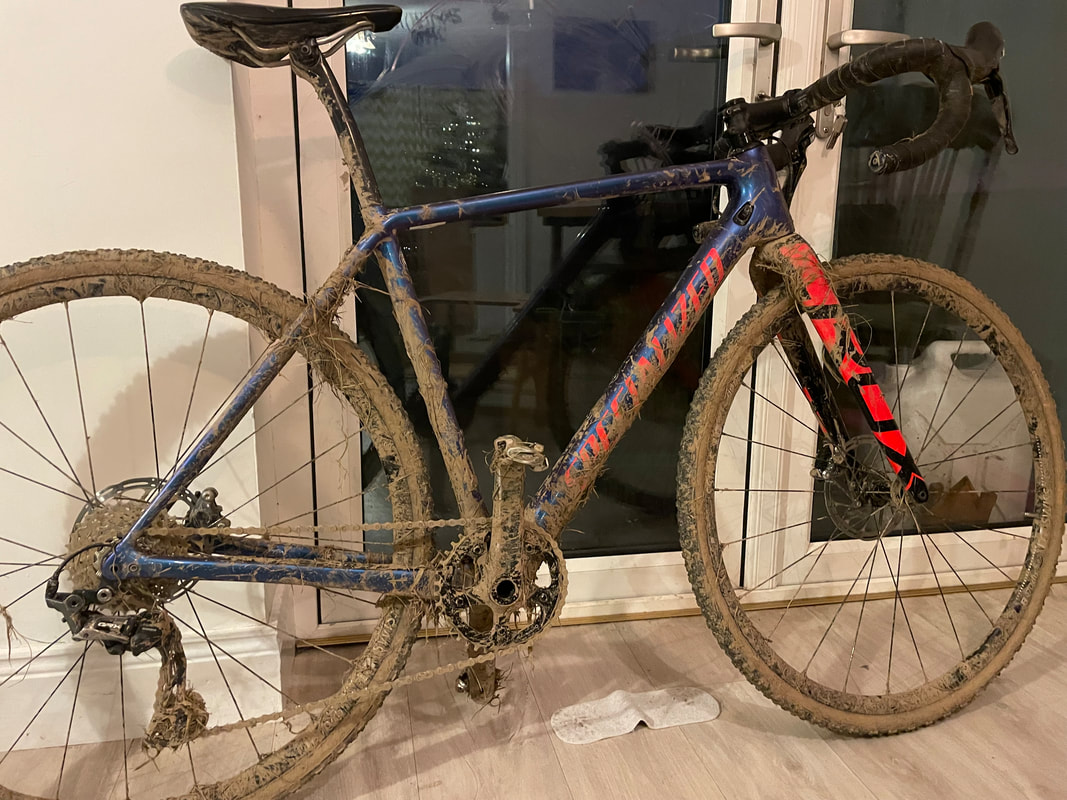




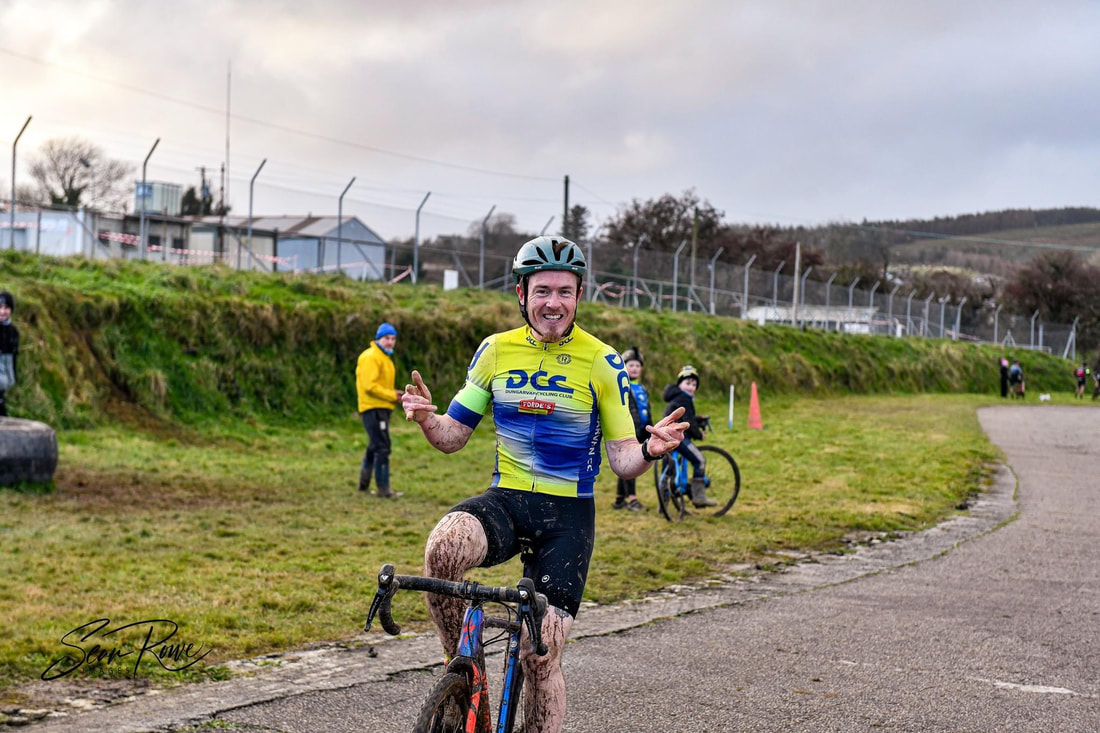
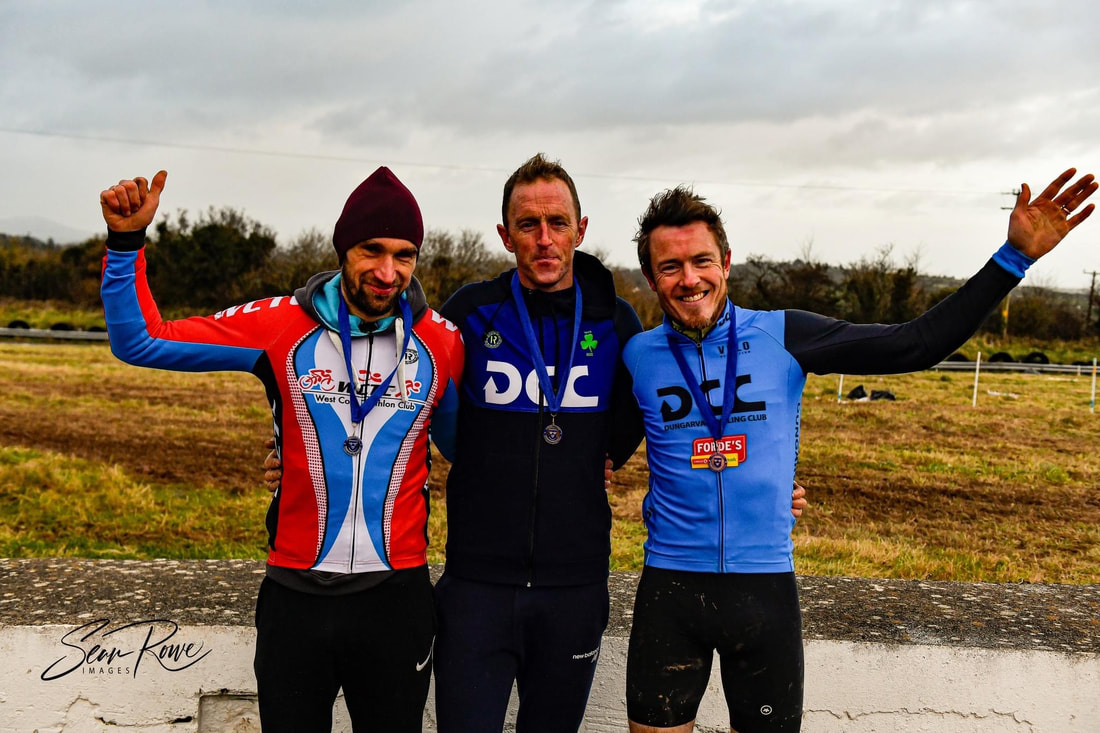
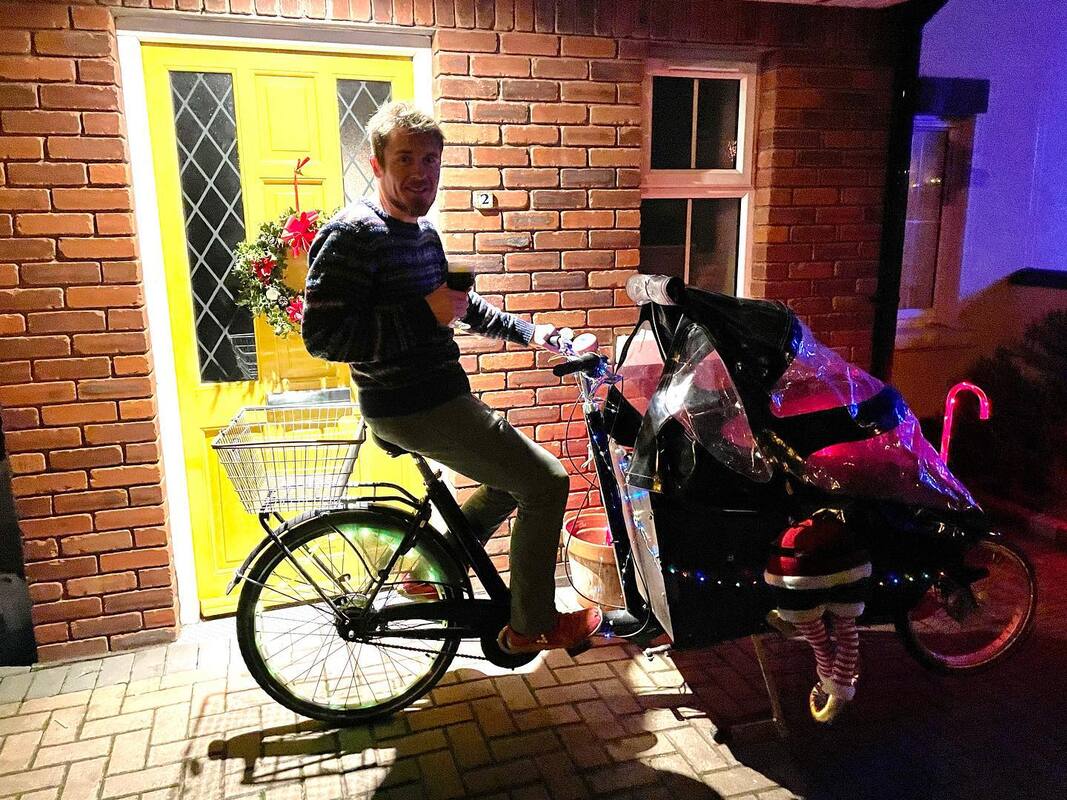
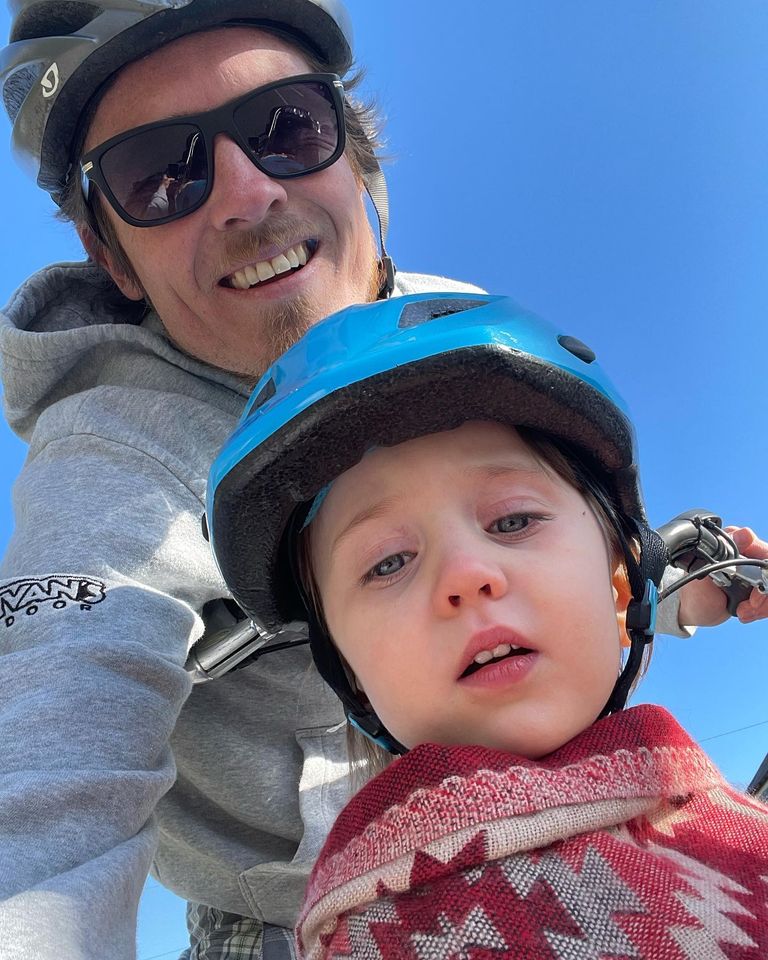

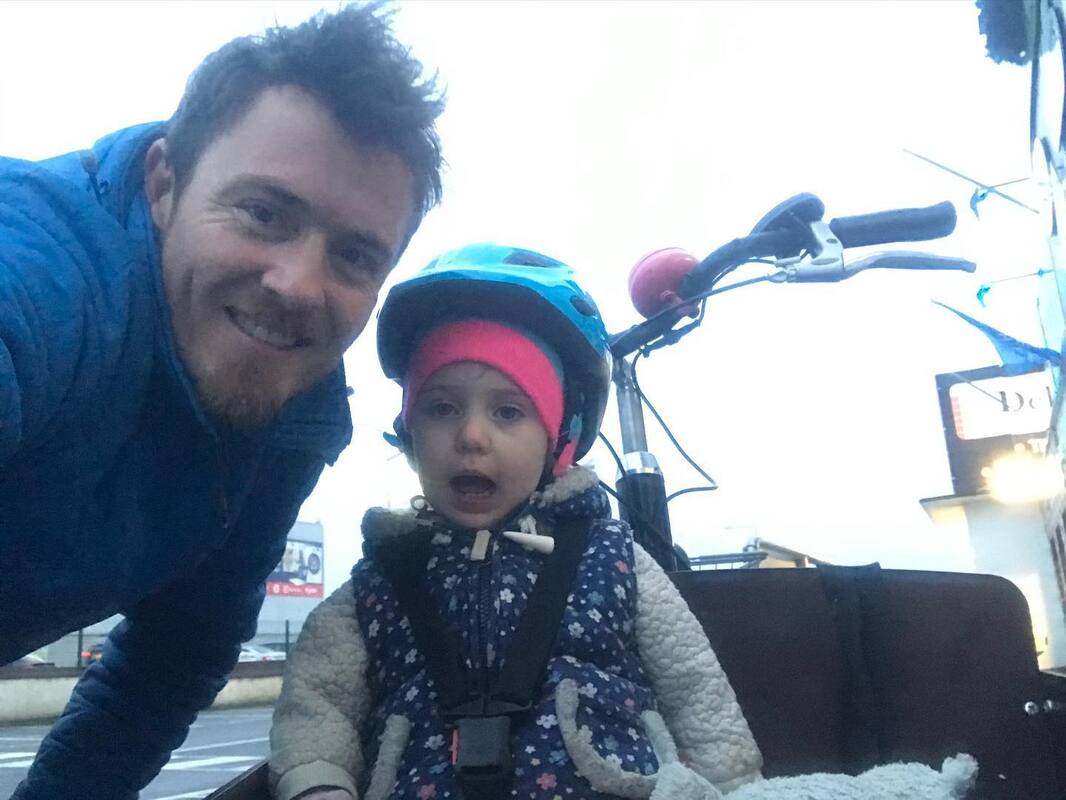












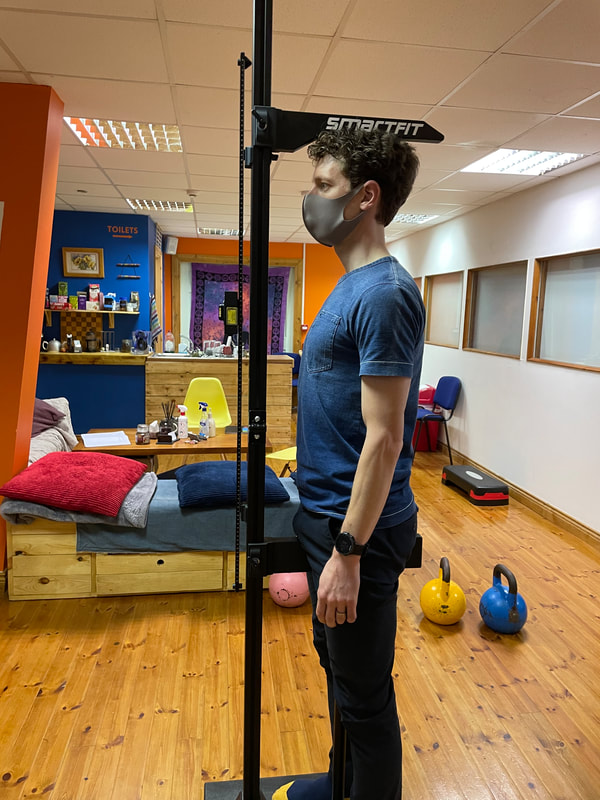







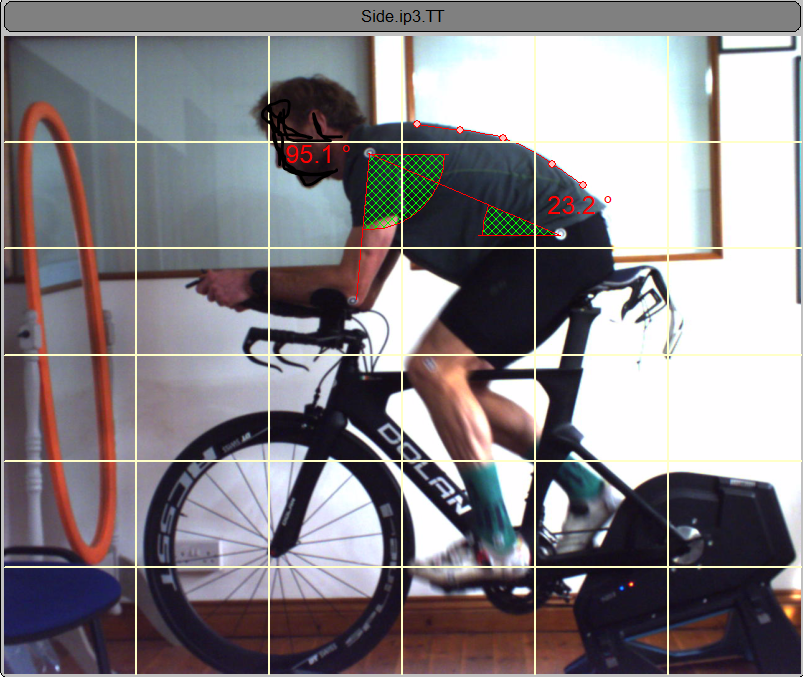

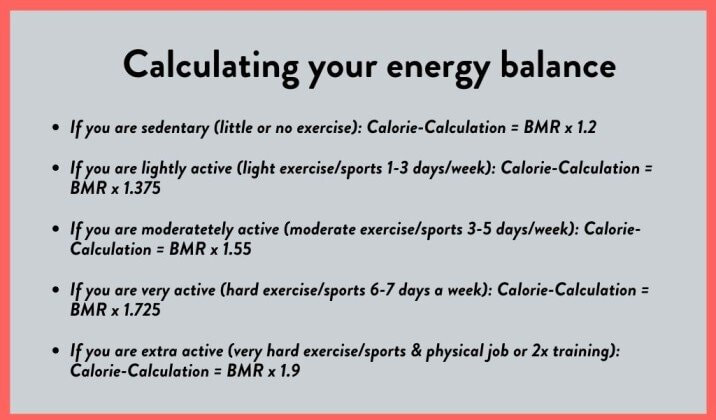
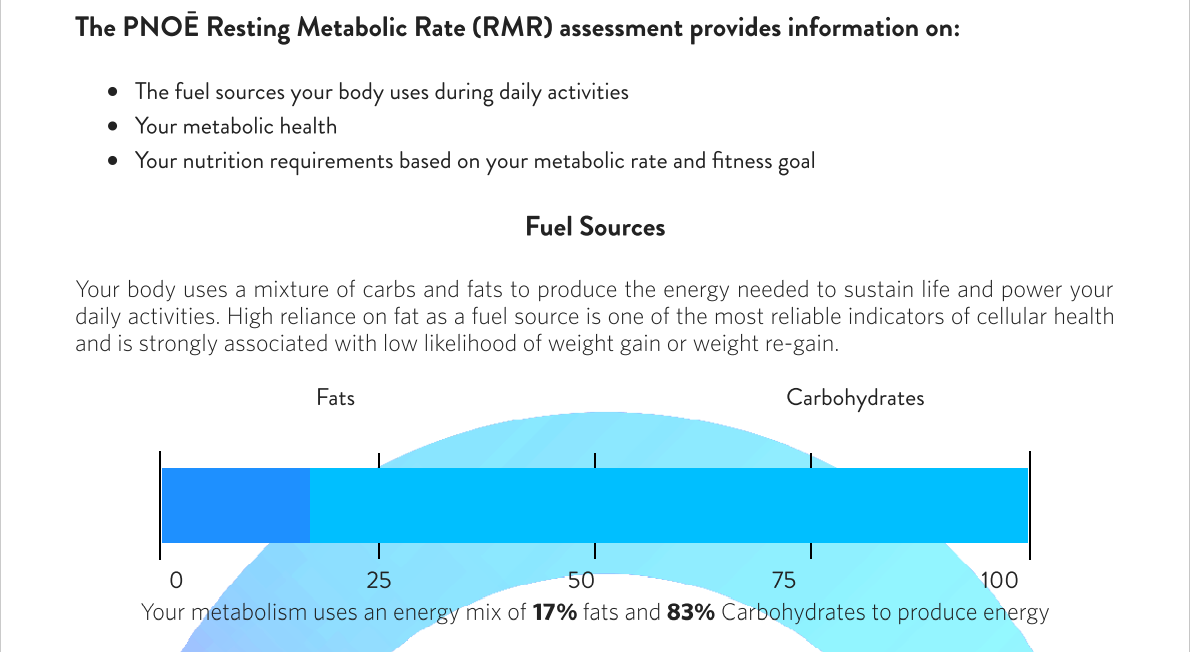
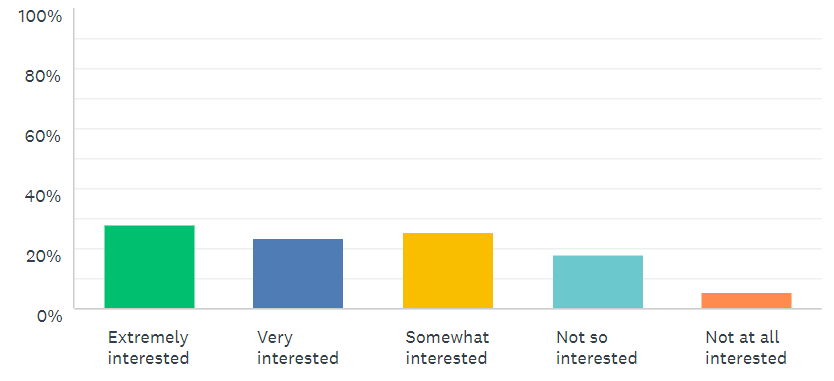
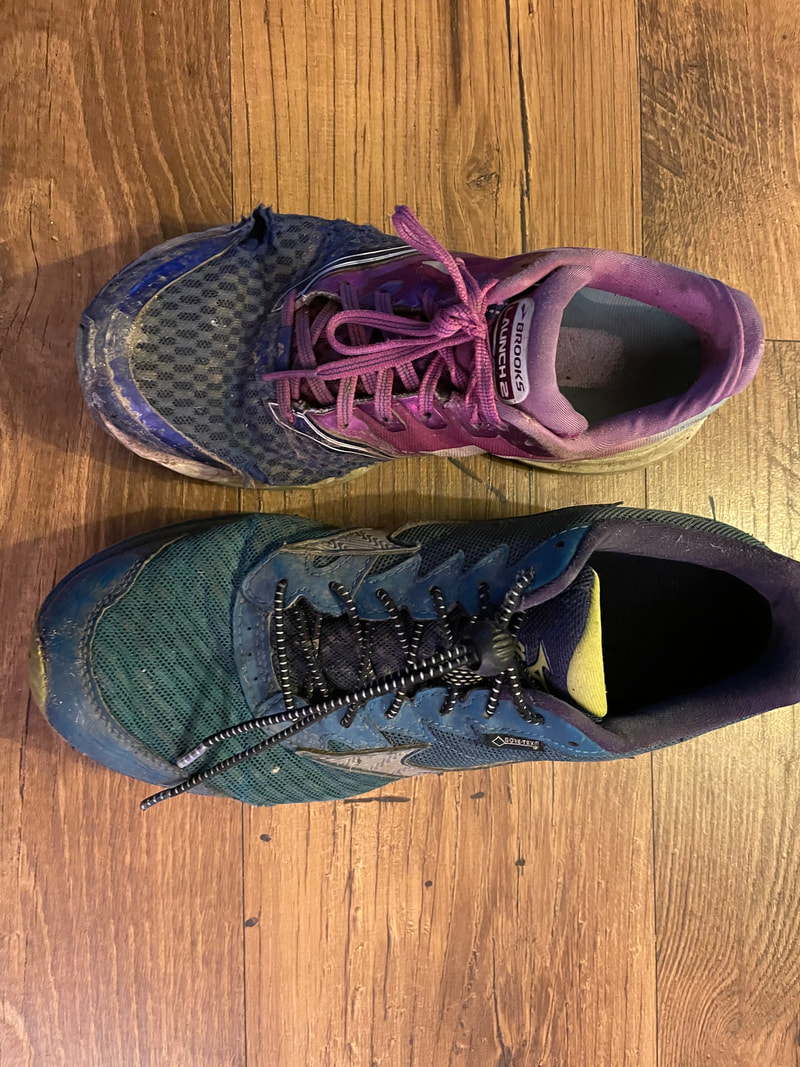



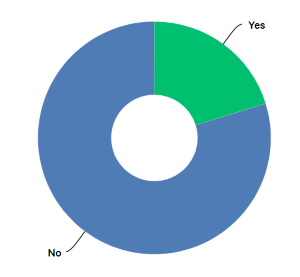

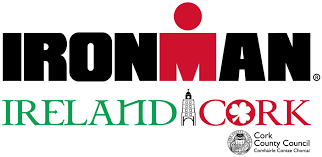
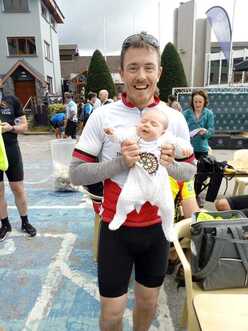

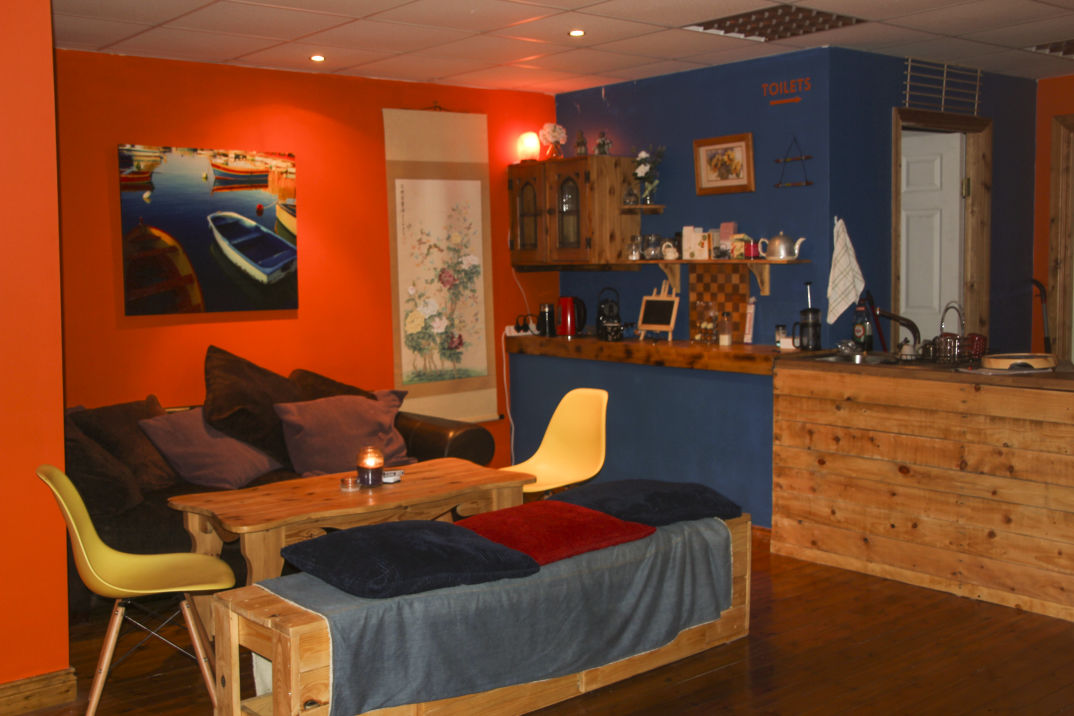


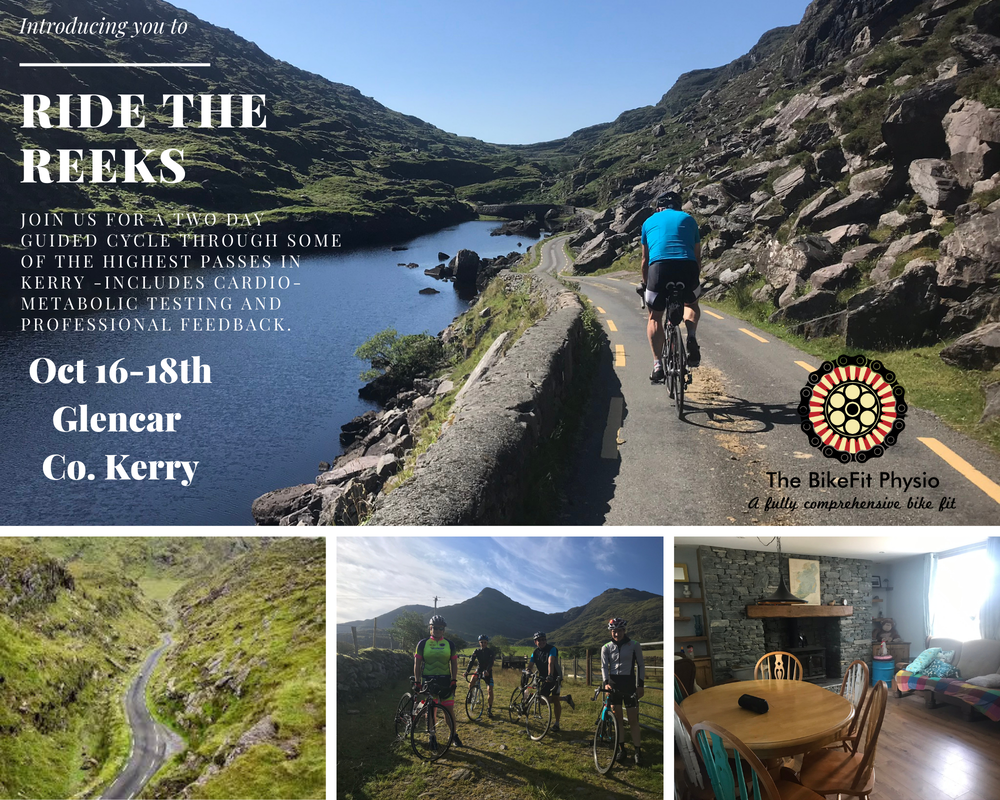

 RSS Feed
RSS Feed